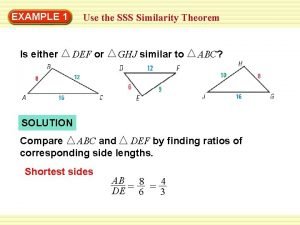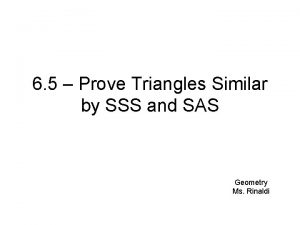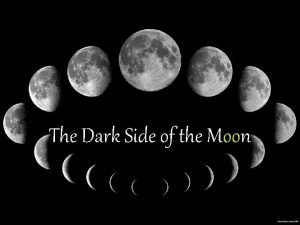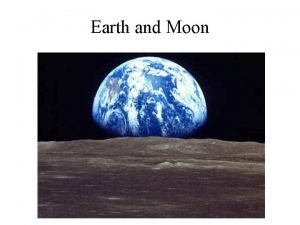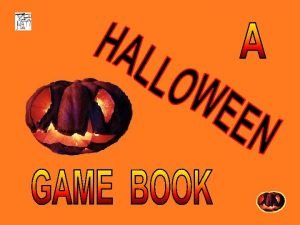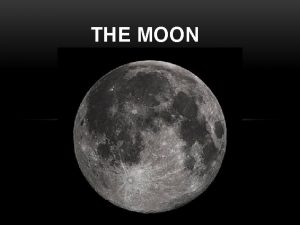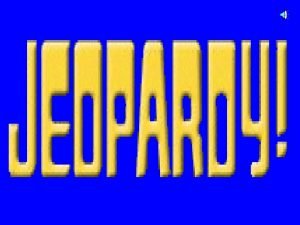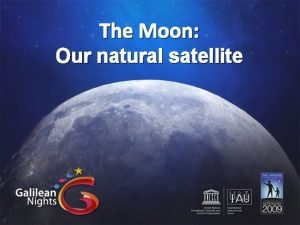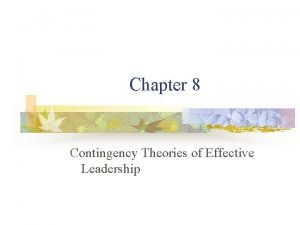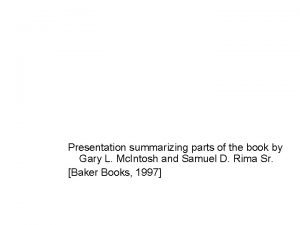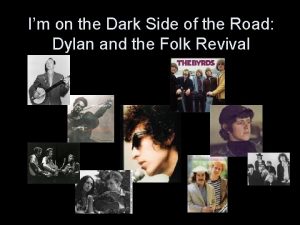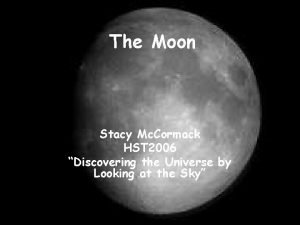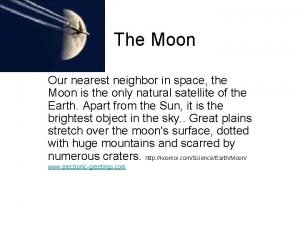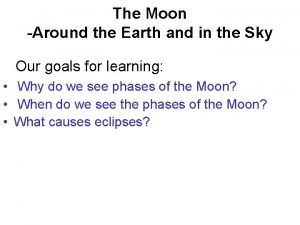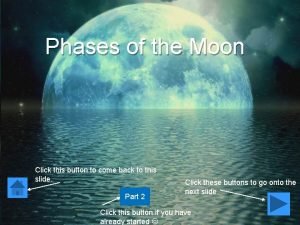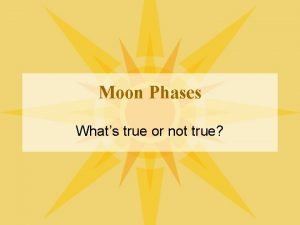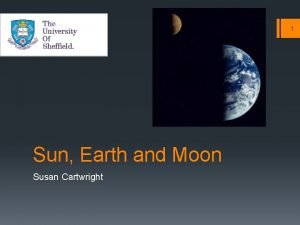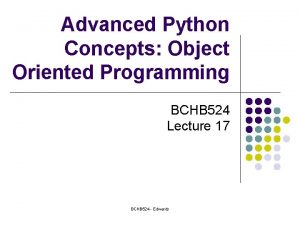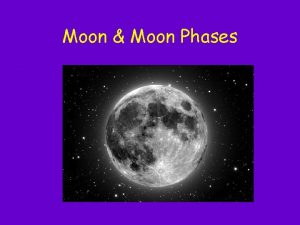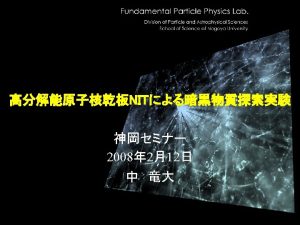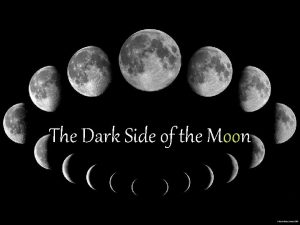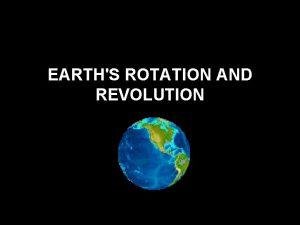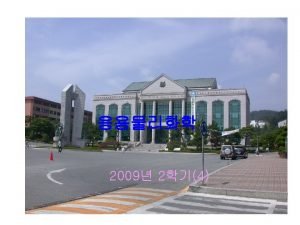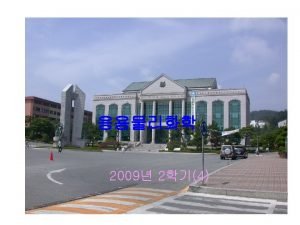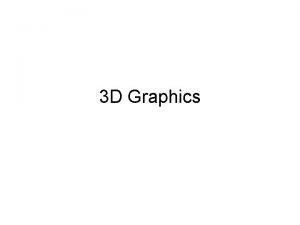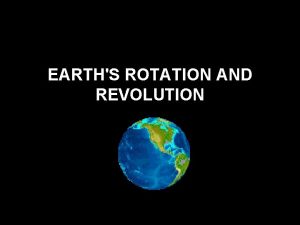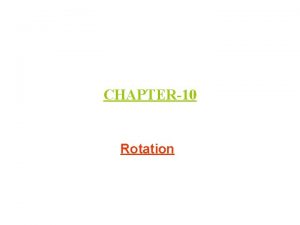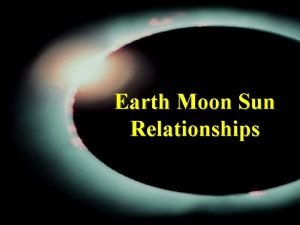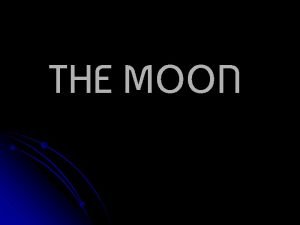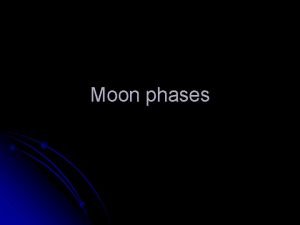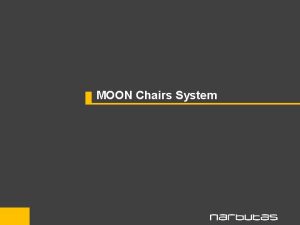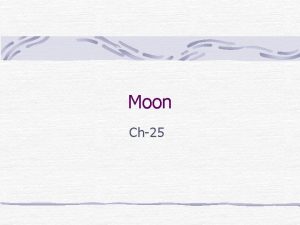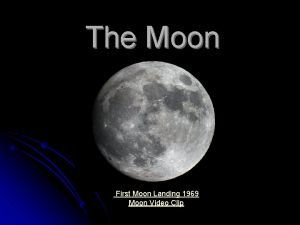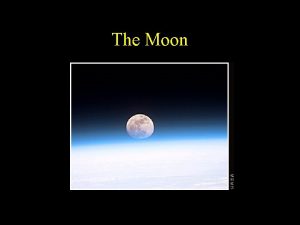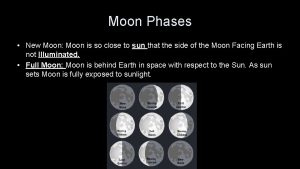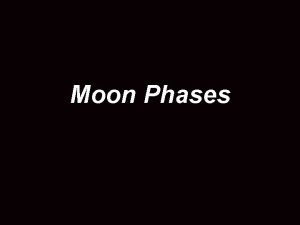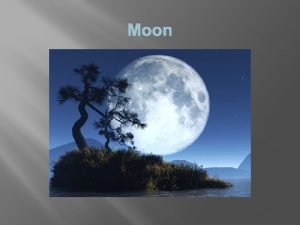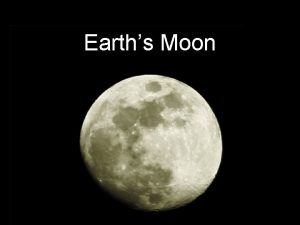The Dark Side of the Moon Rotation vs



























- Slides: 27

The Dark Side of the Moon

Rotation vs. Revolution The moon and Earth both rotate and revolve their way around in our solar system, but what is the difference between the two movements? • Rotation is when a planet or moon turns all the way around or spins on its axis one time. • Revolution is when a planet or moon travels once around an object. So, what is the difference between Earth and the moon?

Earth’s Rotation • On Earth, a rotation is pretty short – Just one day to spin about its axis! • It makes the sun appear to come up in the morning and set at night. • The Earth rotates around its own axis causing some parts to be exposed to the sun and others left in the shadows.

The Moon’s Rotation • The moon also rotates about its own axis in a counterclockwise position. • The time it takes the moon to rotate around its axis is about 27. 3 days.

Earth and Moon – Revolution • Earth takes about one year to revolve around the sun changing the seasons of the year. • The moon takes the same amount of time to rotate about its axis as it does to revolve around (orbit) the Earth – 27. 3 days.

Seasons on Earth • The seasons on Earth on dependent on the axis tilt of the planet and its position away from the Sun. • When the Earth’s tilt is neither away nor towards the Sun but vertical is called the equinox. • And when the Earth’s tilt is away or towards the Sun, it’s called the solstice.

Seasons on Earth Summer Solstice

Seasons on Earth Fall Equinox

Seasons on Earth Winter Solstice

Seasons on Earth Spring Equinox

Seasons on Earth Summer, Fall, Winter, Spring Equinox Summer Solstice Winter Solstice Fall Equinox

Moon Phases • If you watch the moon every night, you will see its shape begin to change! But is the shape of the moon really changing? • No, it’s not! The moon’s position in relation to the earth and the sun is changing • As the sun, the earth, and the moon revolve, the sun’s reflection on the moon gives the illusion that the moon is changing • The light from the sun shines on the moon causing different shadows to appear.

Moon Phases Demonstration • Take your foam sphere and stick or pencil and punch the stick into the sphere. This will represent your “moon” • The lamp will be the “sun” • And you will be the “earth” • Watch how the shadows on the moon change as you orbit the sun! • Observe and record the changes at each moon phase as well as at a lunar and solar eclipse

Moon Phases Let’s go through them one at a time.

New Moon • The new moon occurs when the moon is positioned between the earth and sun. • The half of the moon that we can see is not illuminated at all. WHAT WE SEE DIRECTIONS: Stand facing the sun and have the moon between you (the earth) and the sun. What does the moon look like? Draw a picture of what you see on your worksheet. View from Earth

Waxing Crescent • After the new moon, the sunlit portion is increasing, but less than half, so it is waxing crescent. DIRECTIONS: Turn 45 degrees to your left. Now the moon is no longer between the earth and the sun, but the sun still casts a shadow on the moon. What is the view of the moon from the earth now? WHAT WE SEE

First Quarter • The first quarter moons happen when the moon is at a 90 degree angle with respect to the earth and sun. WHAT WE SEE DIRECTIONS: Turn 45 degrees to your left. Now the moon is 90 degrees away from the sun, but the sun still casts light onto the moon. What is the view of the moon from earth now?

Waxing Gibbous After the first quarter, the sunlit portion is still increasing, but now it is more than half, so it is a waxing gibbous. DIRECTIONS: Turn 45 degrees to your left. Now the moon is getting even further away from the sun. Is the moon appearing to get bigger or smaller? What is the view of the moon from earth now? WHAT WE SEE

Full Moon • At a full moon, the earth, moon, and sun are in approximate alignment • The entire sunlit part of the moon is facing us and the shadowed portion is entirely hidden from view. WHAT WE SEE

Waning Gibbous • After the full moon, the moon is beginning to appear to decrease in size, but more than half of it is still visible, so it is a waning gibbous. WHAT WE SEE

• Third Quarter The third quarter moon happens when the moon is at a 90 degree angle with respect to the earth and sun. DIRECTIONS: Turn 45 degrees to your left. Now the moon is 90 degrees away from the sun again. Which other moon phase does this resemble? How are the two different? What is the view of the moon from earth now? WHAT WE SEE

• Waning Crescent Following the third quarter is the waning crescent, which wanes until the light is completely gone. DIRECTIONS: Turn 45 degrees to your left. Now the moon is almost back around to the sun. How many days does it take for the moon to orbit the earth once? What is the view of the moon from earth now? What will the next phase be? WHAT WE SEE

Moon Phases – Review new moon waxing crescent waning crescent third quarter (half moon) first quarter (half moon) waxing gibbous waning gibbous full moon

High Tide, Low Tide • Every day, the Earth experiences tides, level changes of its oceans. • These are caused by the pull of the moon's gravity. • Two high tides and two low tides occur every day, each are about 6 hours.

Launching to Mars! • If we were going to launch a rocket to Mars, where would we launch it from? ? • How about the equator? Cape Canaveral is one of the closer points in the U. S. to the equator. • But why?

Launching to Mars! • The rotation of the Earth at the equator has the most velocity (is fastest). • This is because the widest point on Earth is at the equator the spot on the equator has to go more miles in the same 24 hours. • This gives the rocket more velocity in order to escape the Earth’s gravity!

Seasons on Mars • The seasons on Mars are, similar to Earth, dependent on tilt of the planet and position away from the sun. • Mars, too has a summer, winter, spring and fall but the lengths of each differ from those of the Earth because Mars has a larger orbit • A Martian year is 687 Earth days.
 Identifying similar triangles
Identifying similar triangles Sss similarity examples
Sss similarity examples Triangle similarity theorems
Triangle similarity theorems Ways to prove triangles similar
Ways to prove triangles similar Optical purity formula
Optical purity formula Moon rotation
Moon rotation Moon rotation and revolution
Moon rotation and revolution In a dark dark town
In a dark dark town Dark matter and dark energy ppt
Dark matter and dark energy ppt Home.hiwaay.net/ krcool/astro/moon/moon tides/
Home.hiwaay.net/ krcool/astro/moon/moon tides/ Duo servicekantoor
Duo servicekantoor Moons pattern
Moons pattern Which moon phase occurs directly before a new moon
Which moon phase occurs directly before a new moon Moon sister moon calendar
Moon sister moon calendar Gothic story and dark secrets
Gothic story and dark secrets The dark side of individualism
The dark side of individualism Nnn dark side
Nnn dark side Overcoming the dark side of leadership
Overcoming the dark side of leadership Dark side of leadership
Dark side of leadership Bob dylan dark side of the road
Bob dylan dark side of the road Do we only see one side of the moon
Do we only see one side of the moon The moon is our nearest neighbour in space
The moon is our nearest neighbour in space Why do we see only one side of the moon
Why do we see only one side of the moon Do we only see one side of the moon
Do we only see one side of the moon Why do we see only one side of the moon
Why do we see only one side of the moon Moon always same side
Moon always same side The man who went to the far side of the moon
The man who went to the far side of the moon Side by side stuff
Side by side stuff

